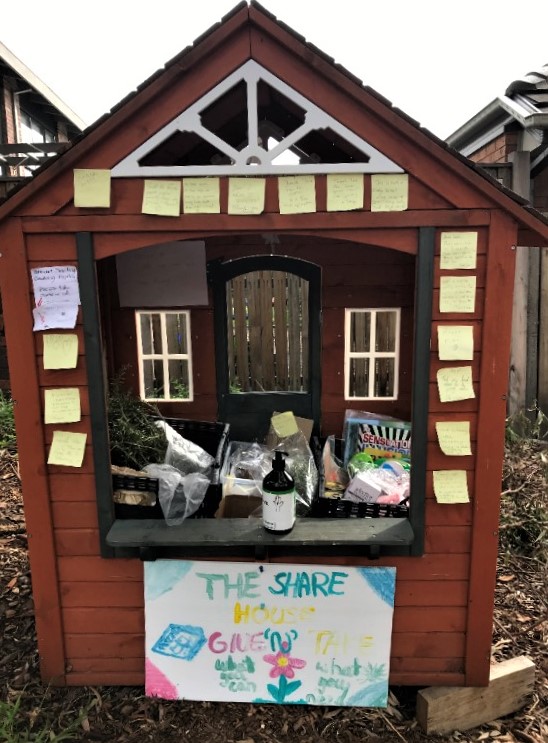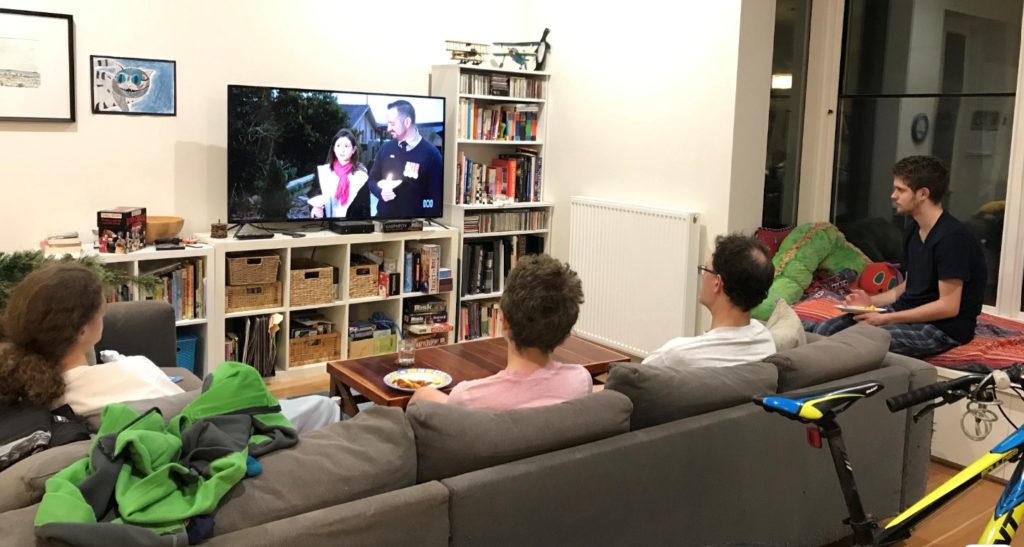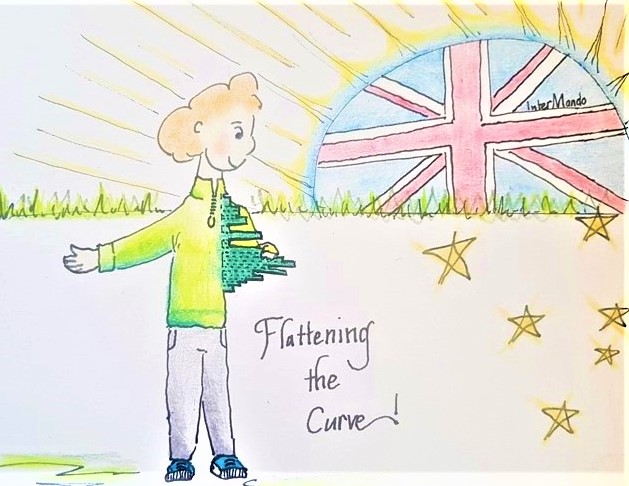So, like everywhere else, everyone’s at home.
I’m in the lucky camp. Things haven’t changed too much for me, in one way. Although my tech skills are improving dramatically as I work out how to deliver music and drama classes remotely to my special needs primary students. My husband can work from home. The two school-age boys seem to be managing their remote classes. And while they’re not exactly doing a whole lot of exercise, at least they’re getting out a bit.
My oldest Aspie boy is doing it tough. He has completely reversed his body clock, staying up all night and sleeping all day, most of the time. That’s another story for another day, perhaps – with his permission.
But I wanted to share some of the things I’ve been doing with my daughter, as I try to help her understand this new world we inhabit.
Understanding
She gets it, sort of. But her autism and intellectual disability compound the challenge of understanding all the changes we’re adapting to, and the length of time these measures are in place.
Sometimes I wonder what my daughter’s getting out of her Zoom sessions. There’s not much interaction. Or movement.
But if “all” she gains is joy at seeing some friends, who am I to diminish the value of that?
On one level, she knows that life has changed. You can’t really escape the physical reminders, can you? She’s not on the train going to her program each day. We won’t let her go to the shops any more. Her social activities have stopped.
“I want to go out and buy lunch,” she tells me plaintively.
“You can’t, not until this is all over,” I tell her.
“I used to do it on Mondays. Can I go out on Monday?”
“No, not yet.”
“I miss getting my lunch on Mondays. When can I do it?”
“When this is over.”
“When will that be? Next week?”
“No, sweetheart, not next week. I don’t know when.”
Not for a long time yet, probably, where she is concerned.
These open-ended time-frames are particularly difficult for her to understand. We revisit this conversation frequently.
Activities
As with her brothers, her day program has moved to being delivered remotely. As much as it can. She has three 40 minute Zoom sessions each weekday now, instead of a six-and-a-half-hours day of activities. I try not to hover, as this is her time to be independent. But I can’t help overhearing her silences in response to questions. It’s a lot harder to elicit conversation from her over a screen than it is face to face.
Sometimes I wonder what she’s getting out of these sessions. There’s not a whole lot of interaction. Or movement. However… I can see her enjoyment at seeing the handful of other program participants who are joining in. She’s learning to engage with technology a bit more. She’s managing her time independently, ensuring that she’s back on the session every hour. She mostly submits to being cajoled outside for a quick walk in between sessions.
The “share and care” cubby house down the street is a good focus for her walks, a creative activity and for teaching about being part of a community and looking out for each other.
She doesn’t see all her friends, as not everyone is Zooming in. Remote learning for those with special needs varies from being an okay stop gap to being completely inadequate or totally useless.
If “all” she gains is joy at seeing some of her friends each day, who am I to diminish the value of that? One of the things most discussed is the feeling of isolation from family and friends, and the importance of face-to-face contact. Keeping us healthy mentally is as much of a challenge as keeping us healthy physically.
My daughter doesn’t – can’t – communicate how she’s feeling emotionally. Over time, I’ve become finely attuned to her body language and other means of expressing how she feels. But I don’t always get it right. I’m sure that I often miss or misinterpret her signals. And now, more than ever, just because she mightn’t talk about missing her friends, doesn’t mean that she doesn’t miss them.
Her brothers phone their mates, and keep in touch in other ways. But their sister? Platforms like Zoom and Houseparty don’t really make the cut as a pandemic alternative for a young woman with difficulties in communicating. She can’t just sit down and have a conversation. So looking at people over her Zoom sessions is helping to create a sense of connection. It’s making her happy.
Share and care house
At the end of our street, someone put up a little cubby house with a hand-painted sign. We call it the “Share and Care” house. It’s become a focal point for neighbours leaving things for each other. Fruit, herbs, biscuits, toys and games, plants, even some medical items and precious masks have been placed there. A pad of yellow sticky notes is there for people to write on. There’s even hand sanitiser to use.
Each week, we leave our own contributions. With an abundance of feijoas on our trees this year, we’ve left bags of fruit there several times. We’ve made biscuits and left them. And my daughter also likes to go and check out what the latest is there.
It’s a good focus for her walks, for a cooking activity (biscuits!) and for teaching about being part of a community and helping to look out for each other.

Our neighbourhood “Care and Share” house.
“That’s good,” she commented, on seeing little bundles of Easter Eggs that were left there over the Easter Weekend.
She was pleased to read thank you notes that had been left by people who took feijoas, or biscuits.
And she likes to go out by herself to take our contributions.
Routine
We’ve all been encouraged to establish routines, to create a sense of normality and patterns to follow in our lives. I’ve tried to adhere to a reasonably regular routine with my daughter, and exercise is a big part of this.
Instead of walking to the station each morning, we do a “walking bus” for twenty minutes around the block before her first Zoom session. Likewise, before afternoon tea, she has to go for a walk. “Just as if you were coming home from the train,” I remind her, when she’s pushing for afternoon tea at 2.00!
“I’m flattening the curve,” she announced out of the blue a couple of days ago, while we were out for our first morning walk.
“Yes,” I said, “because we’re staying at home and only going out for exercise.”
“No,” she replied, patting her stomach, “Flattening this curve!” She gave me a big grin.
It was very funny, because while “flattening/fattening the curve” has become a bit of a “meme moment”, it wasn’t a pun that I had shared with her.
Lunch and dinner are still routines, as is the weekend sleep-in. She has a session with an exercise physiologist once a week. Because we’re now making sure dinner is organised so we can watch the news each night, listening in to the news has also become part of her routine.

While her father and I, often now with the three boys, plonk on the couch to watch, she’ll be poring over one of her three favourite jigsaws at the kitchen table, throwing out odd comments to the floor. “Is that because of the virus?” Or “It’s that COVID 19 again!” But she refuses to come and join us. Unless popcorn is on offer.
Where to from here?
None of us really knows.
But the one thing I’m absolutely determined to do is to make the most of this extra time.
To not let the afternoon hours slip away with my daughter just moving between her ipad at the kitchen bench and the jigsaw at the kitchen table. To get her out and about exercising. To engage her more with cooking, which I have more time to do now that other things aren’t happening. To get her out into the garden. Okay, that’s only happened twice so far, but that’s twice more than nothing!
It would be very easy to let things slip. She’s quiet, unobtrusive and content to be left alone. But she won’t learn or develop.
And, like all of us, she needs stimulation. So I need to be really intentional about organising it.
It doesn’t need to be fancy. Half an hour in the garden, even though it usually involves me doing more work than her, is still exposing her to something different. Making dinner once a week might still see me chopping the onions, but she’s getting faster with the carrots, and more confident with managing the heat of the oven.
We can always find a little bit of time, which means there’s always something we can do. It doesn’t need to be big. But it does require intention and persistence.
Good luck!
Stay safe, soap on and Happy Wombatting!


